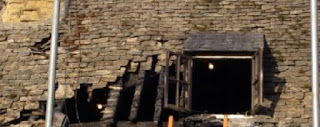Most commonly used as a means of inspecting all visible and
accessible parts of your building’s structure, a full structural survey looks
for defects within the structure and for possible future indications of defects
and makes advisory notes for minimising both damage and the risk of future
damage.
The full structural survey also inspects elements that do
not make up the building’s structure itself, such as roof coverings like thatch
and tiles, windows and drains.
When do I need a structural survey?
Here are four of many reasons for getting a full structural
survey on a property.
1.
Before purchasing a house
Although it is not a legal requirement to
have a full structural survey done on a property you’re hoping to buy, it is
highly advisable. Once your offer has been accepted, your mortgage advisor is
likely to instruct a survey to back up the financial offer. The vendor is also
free to have a survey done on the property they are selling and make it
available to all who ask. The buyer should consider getting the survey done by
a chartered surveyor (MRICS) who will also look at issues with moisture
penetration (damp), electrics etc that might not be structural issues but will
affect the habitability of the dwelling.
The surveyor will advise if there are any issues that need to be
investigated by a structural engineer.
2.
Advice on building repairs after fire or flood
damage
Bear in mind that fire damage almost always
comes along with water damage from the effects of fighting the fire. So,
whether from fire or water damage including external flooding due to adverse
weather, or internal flooding from the likes of broken pipes, your structural
engineer will assess the level of damage that has been caused. You will receive
a full report detailing the integrity of load bearing structures within the
building and advice on the extent to which repairs should be undertaken. Your structural engineer can also report on the risks associated with local flooding and subsistence. A good, comprehensive survey will take into account size and number of trees present, for example and offer advice on interventions such as underpinning.
3.
Emerging structural issues
A substantial part of the work of
structural engineers is assessing the defects that appear in buildings after
the passage of time. Cracks in walls are very common as are areas of movement
under floors and to the roof line. The causes of structural issues are fully
investigated and appropriate solutions determined. Reports will include advice
on repairs or changes to satisfy building control, local authorities or
potential buyers.
4.
Before alterations
Prior to altering the size of your home, an
inspection may be required to make viability calculations and ensure the
adequacy of the existing structure. Structural advice, including drawings may
be required by the local authorities before improvements or alterations are
made to an existing building. Extensions into the roof for example will need
preparations allowing for changes to the existing roof structures such as
trusses, ceilings and floors below.
There are of course other reasons a full structural survey
may be required, so if you require advice on any of the following, or on making
applications for planning approval, please get in touch and we will be
happy to discuss your requirements.
·
Advice
on the preservation and/or repair of a building including listed buildings
·
Satisfying
the requirements of the local authorities in terms of dangerous structure
notices
·
Preparing
plans for contemplated party wall agreements.
·
Structural
appraisals of existing buildings that are being considered for change of use.
You can read about our structural survey services here: http://www.gemma-design.co.uk/inspections-surveys.html
[RS1]Flooding
and subsidence aren’t necessarily linked. They can be in the case of collapse
inundation settlement but subsidence can also be caused by swallow holes, presence
of trees etc.

No comments:
Post a Comment